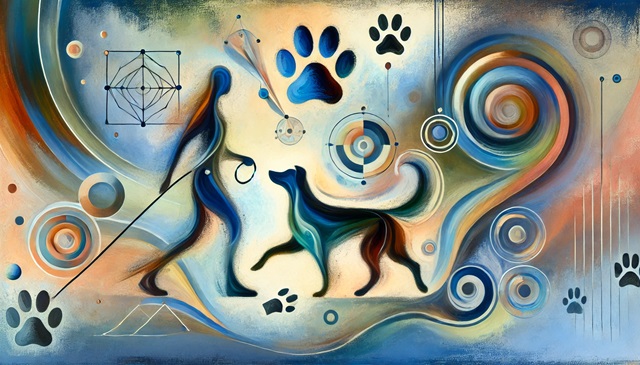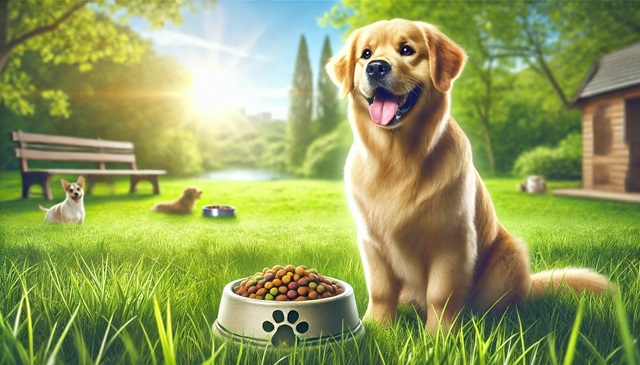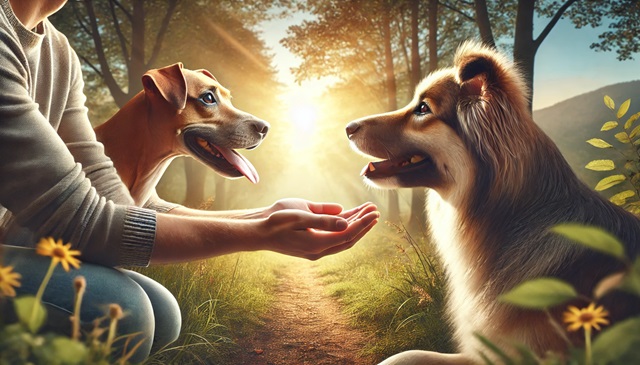You know what you're looking for in a dog. You know what you can and cannot accommodate in a dog. You know what kind of lifestyle you can offer a dog and what your dog should be expected to offer you in return. Now comes the fun part - picking out your preferred breed(s) or types of dog!
As we've talked about earlier, selecting a dog breed does not mean that you are necessarily going to get a purebred dog or even that you want to do so. But by knowing what types of dogs compose each of the seven standard breed groups, you'll be able to eliminate a lot of the possibilities out there that you can identify are not the right match for you. Registered breeders will be able to provide you with detailed information about the breed of your dog; the owner of the mother of a pup from an accidental litter should be able to give you some idea of the dog's breed and background. If you adopt a puppy or dog from a shelter or its humane society, the veterinarians who work with them have usually identified one or two primary breeds that compose a dog. When all else fails, a veterinarian or breeder should be able to identify what breed group your dog most likely belongs to even if they didn't provide the dog themselves.
Different kennel clubs throughout the world recognize different breeds and different breed groups; our foray into breed groups is based on the American Kennel Club (AKC), one of the most recognized experts in the field. The AKC has designated the following groups: the Sporting Group, the Hound Group, the Working Group, the Herding Group, the Terrier Group, the Toy Group, and the Non-Sporting Group. Each of these groups is composed of a number of different breeds, some of which are actually included into subgroups. Each group is formed based on a mixture of characteristics, most particularly which ever one or two characteristics are strongest within that group. For example, the Toy Group are essentially grouped together based on their size whereas breeds included in the Hound Group receive that designation because of their deeply ingrained desire and skill to hunt.
The Sporting Group
Breeds in the Sporting Group tend to be very productive and active dogs. Traditionally, these were usually dogs who would accompany their owners on a hunt where their master would do the killing and they would do the retreating. Unsurprisingly, breeds such as golden retrievers are members of the Sporting Group. The following breeds are included in this group:
Subgroup: Pointers
? German Shorthair Pointer
? German Wirehaired Pointer
? PointerVizsla
? Weimaraner
? Wirehaired Pointing Griffon
Subgroup: Retrievers
? Chesapeake Bay Retriever
? Curly-Coated Retriever
? Flat Coated Retriever
? Golden Retriever
? Labrador Retriever
Subgroup: Spanie
? American Cocker Spaniel
? American Water Spaniel
? Clumber Spaniel
? English Cocker Spaniel
? English Springer Spaniel
? Field Spaniel
? Irish Water Spaniel
? Sussex Spaniel
? Welsh Springer Spaniel
Subgroup: Setters
? Brittany
? English Setter
? Gordon Setter
? Irish Setter
Physical characteristics of the Sporting Group
Generally speaking, sporting dogs tend to be medium to large (typically between 20 to 75 pounds), with medium to long hair. Due to their ingrained sporting nature, they tend to be very high energy dogs and are intelligent as well.
What does this mean for you?
By choosing a dog from the Sporting Group, you must be willing to make a commitment to ensuring their physical and mental stimulation needs. These breeds have a reputation for being family-friendly and they are in terms of safety and ability to emotionally handle the chaos of a busy family life. However, if you and your children are frequently away from home, you are likely to have problems with a dog from this group. Long hours of isolation can produce a lot of anxiety among sporting dogs and a lack of sufficient exercise may result in a destructive and hyper dog. If you are active and are looking for a pet to engage in an active lifestyle but who is also a laid-back and generally a happy dog, one of these breeds may be ideal for you. If you have limited space, limited time, and limited physical activity, look elsewhere for a better fit.
Ideas for accommodation
Subgroup: Sight Hounds
? Afghan Hound
? Basenji
? Borzoi
? Greyhound
? Ibizan Hound
? Irish wolfhound
? Pharaoh Hound
? Saluki
? Scottish Deerhound
? Whippet
Subgroup: Scent Hounds
? Basset Hound
? Beagle
? Black and Tan Coonhound
? Bloodhound
? Dachshund
? American Foxhound
? English Foxhound
? Harrier
? Otterhound
? Petit Basset Griffon Venden
Subgroup: Large Game Hounds
? Norwegian Elkhound
? Rhodesian Ridgeback
Physical characteristics of the Hound Group
There's a tremendous range of physical characteristics among breeds in the Hound Group. Some hounds, such as the dachshund, are short and relatively lightweight while others, such as the Rhodesian Ridgeback, are very large and physically powerful. Most of the hounds have short to medium care, requiring limited grooming. Many hounds are particularly healthy breeds while others are more likely to struggle with health issues, especially if they are overweight for their size.
What does this mean for you?
Depending on where you live and what access your hound has to other animals, strange sights, and strange smells, your hound may be in hog heaven or may cause some problems. Hounds were traditionally raised and trained in pairs or packs so they are definitely trainable if you operate within the pack mentality (where you are the Alpha dog). Hounds typically tend to be relatively easygoing dogs until or unless a sight or smell beckons to them. When something piques their interest, a hound may have difficulty not pursuing their prey.
Ideas for accommodation
Which Breed is Right for You? Part 2
The Working Group
Working dogs perform a number of different actions based upon their chosen occupation which may vary tremendously from one subgroup to another. But the Working Group's overriding characteristic is their dedication to their work. Many of these task oriented dogs can be phenomenal family pets but only if they can be provided with an outlet to satisfy their inherent desire to work; many of these dogs should only be chosen by an individual who will provide a tremendous amount of time and energy towards socializing and training them.
Dogs in the Working Group include the following:
Subgroup: Sled Dogs
Bull Mastiff
? Great Dane
? Great Pyrenees
? Komondor
? Kuvasz
? Mastiff
? Rottweiler
Subgroup: Personal Protection Dogs
? Boxer
? Doberman Pinscher
? Giant Schnauzer
? Standard Schnauzer
Subgroup: Rescue/Water Dogs
? Newfoundland
? Portuguese Water Dog
? Saint Bernard
Physical characteristics of the Working Group
There are few physical characteristics that are universal within the Working Group. Most working dogs are large animals which equips them with the ability to pursue their particular occupation. Sled dogs typically have very thick coats while rescue/water dogs and draft dogs have medium or thick coats. Guard dogs and personal protection dogs generally have shorter coats and require little grooming. Working dogs are a strong group and guard and personal protection dogs in particular tend to have sharp teeth and strong jaws as well.
What does this mean for you?
Territorial breeds such as guard dogs and personal protection dogs tend to be a poor fit for large families or in areas that have a lot of visitors or high traffic. Busy households can create a lot of stress for a territorial dog who may then act out with aggression. Likewise, these dogs if often don't do well with small children if a situation arises where the dog feels that the child is keeping them from doing their job. For sled dogs or those Working dogs with a lot of hair or a thick coat, these dogs are acclimated to cooler temperatures and would be unhappy in a warmer climate.
Ideas for accommodation
Working dogs are generally adaptable as long as they have sufficient ability to do their work. Structured training is usually necessary unless you want a dog who is likely to become aggressive when anyone other than a family member comes around. Strong training and socialization can help curb the aggressive nature of these dogs and they can be excellent family pets if sufficient time and training is invested. However, if you and your family is unlikely to have lots of time to train, socialize, and exercise your dog, it's best to leave the working group for someone who may be a better fit.
The Herding Group
There are two main subgroups that comprise the Herding Group, a group of breeds designed and bred to perform very specific functions. Although similar to the Working Group in terms of a deep desire to perform their job function, members of the Herding Group are not territorial while still maintaining a deep level of loyalty. Dogs in this group can often make ideal family pets though they may not be as great of a match for an individual owner.
Dogs in the Herding Group include the following:
Subgroup: Sheep Herders
? Australian Shepherd
? Bearded Collie
? Belgian Malinois
? Belgian Sheepdog
? Belgian Tervuren
? Border Collie
? Collie
? German Shepherd
? Old English Sheepdog
? Puli
? Shetland Sheepdog
Subgroup: Cattle/Sheep Driving Dogs
? Australian Cattle Dog
? Briard
? Bouvier des Flandres
? Canaan Dog
? Cardigan Welsh Corgi
? Pembroke Welsh Corgi
Physical characteristics of the Herding Group
Generally speaking, dogs included in the sheep herder subgroup usually have a medium to large build with medium to long hair. Driving dogs tend to be strong and stocky, such as the corgi who has a relatively large body on very short legs. Herding dogs tend to be high energy though not inherently hyper.
What does this mean for you?
Because they're bred to perform certain functions, herding dogs are usually very intelligent and highly trainable which can make them ideal family pets. Generally speaking, they are used to being the only dog in the group and sometimes have difficulty adapting to other family pets as they tend to want to herd them. Without sufficient exercise and training, these dogs are also inclined to herd people, especially children; they may also develop obsessive behaviors that are sometimes dangerous such as chasing cars.
Ideas for accommodation
The most important thing you can do to accommodate for a herding dog is to provide them with sufficient exercise and to provide consistent training. Typically these dogs are very safe to have around children although driving dogs may nip at ankles if they haven't been well trained. Although it is best if they're the only dog (or the only pet) in a family, socialization can help curb their herding tendencies. Because they are so intelligent and have been bred to obey their masters, these dogs can be extremely loyal and make wonderful family pets.
The Terrier Group
While guard and personal protection dogs from the Working Group are typically thought of as being the most aggressive dogs, members of the Terrier Group can definitely hold their own. Historically, terriers were bred to fight, kill, or bait other animals. Baiting consisted of the terrier quickly biting another animal (such as a bear), then retreating where it couldn't be hurt back. Some terriers were originally bred to hunt down small pests such as vermin while others were designed to fight each other. Because of this aggressive background, many people are unclear as to whether or not some terriers (particularly pit bulls and similar) can make safe family pets.
Dogs in the Terrier Group include the following:
Subgroup: Vermin Hunters
? Airedale Terrier
? Australian Terrier
? Bedlington Terrier
? Border Terrier
? Cairn Terrier
? Dandie Dinmont Terrier
? Fox Terrier (Smooth and Wirehaired)
? Irish Terrier
? Jack Russell Terrier
? Kerry Blue Terrier
? Lakeland Terrier
? Manchester Terrier
? Miniature Schnauzer
? Norfolk Terrier
? Norwich Terrier
? Scottish Terrier
? Sealyham Terrier
? Skye Terrier
? Soft Coated Wheaten Terrier
? Welsh Terrier
? West Highland White Terrier
Subgroup: Fighters
? American Staffordshire Terrier (AKA Pit Bull Terrier)
? Bull Terrier
? Miniature Bull Terrier
? Staffordshire Bull Terrier
Physical characteristics of the Terrier Group
Generally speaking, members of the Terrier Group may have body types that range from small to large. Many are physically strong, somewhat more so than others, while they almost all are quick and spirited. Due to their combative background, terriers typically have a somewhat higher level of aggression than many other breeds and often are somewhat resistant to training that contradicts their inherent desire to fight or kill.
What does this mean for you?
Although members of this group have such a negative reputation and are sometimes more aggressive, most breeding lines have limited or eliminated the terriers' dangerous impulses. They are not usually a great match for well ordered and organized families who want complete control over their pets but they can make excellent dogs for the families' who work with them to create good boundaries. Many terriers will often demonstrates some level of spatial aggression when it comes to their food or chew toy day, but can be very lovable and safe when trained properly.
Ideas for accommodation
Which Breed is Right for You? Part 3
The Toy Group
Dogs in the Toy Group are classified together based primarily on their size which tends to be tiny or small (approximately less than 20 pounds). Toy dogs generally have descended from larger breeds that were bred together for the sole purpose of miniaturizing the dog breed itself. Hence, many toy dogs have similar personalities to larger dogs in the breeds we have already covered (or the Non-Sporting Group to come) all contained into a small package.
Dogs in the Toy Group include the following:
(There are no subgroups)
- Affenpinscher
- Brussels Griffon
- Cavalier King Charles Spaniel
- Chihuahua
- Chinese Crested
- English Toy Spaniel
- Havanese
- Italian Greyhound
- Japanese Chin
- Maltese
- Miniature Pinscher
- Papillon
- Pekingese
- Pomeranian
- Pug
- Shih Tzu
- Silky Terrier
- Toy Manchester Terrier
- Toy Poodle
- Yorkshire Terrier
Physical characteristics of the Toy Group
Aside from their small build, toy dogs can vary tremendously when it comes to their appearance and coats. There can be high variation even within a particular breed; the same litter of Chihuahuas may produce both long haired and short haired dogs. Many members of the Toy Group do require regular grooming, particularly the Papillon, toy poodle, spaniels, the Maltese, and so on. Although they may have a lengthy coat, members of the Toy Group sometimes struggle with colder climates due to their small bodies. The tiny bodies of toy dogs also means they eat less, often require less exercise, which are more fragile, and have smaller bladders and bowels (especially puppies).
What does this mean for you?
Toy dogs are often ideal for apartment life due to their small stature. Many toy dogs are lap dogs, typically attaching themselves to one particular member of the family. But because these breeds often retain the personality of their larger counterparts, they may be highly protective, territorial, spoiled, and difficult to train. In fact, due to their small size many others tend to treat their toy dog as a baby rather than a dog, often resulting in a dog who thinks they are in charge of the pack. Individuals who are disabled or have limited mobility are ideal matches for toy dogs who usually need far less exercise than other dogs.
Ideas for accommodation
Toy breeds can be phenomenal pets for almost any family, given the right socialization and training (with the possible exception of the families who want one family dog to love everyone equally). For an adult or child looking for a more intense relationship, a toy dog may be an excellent match. If you live in a colder climate, be sure to keep your dog warm; members of the Toy Group are the only dogs who actually sometimes need clothing in colder weather. Because of their small bodies and the frequency of their bodily functions, these dogs can benefit from the use of a puppy pad. Be sure not to neglect the dogs training based on their appearance; you may be surprised to discover how demanding and destructive of 5 pound dog can be who doesn't know its place in the family.
The Non-Sporting Group
The Non-Sporting Group is a catchall group for dogs that don't easily fit within any of the other categories. Oftentimes, these dogs were bred for highly specific and relatively rare purposes or simply have personalities with varying characteristics. Above all, members of the Non-Sporting Group tend to make excellent companions for virtually any family.
Dogs in the Non-Sporting Group include the following:
(There are no subgroups)
- American Eskimo Dog
- Bichon Frise
- Boston Terrier
- Bulldog
- Chinese Shar Pei
- Shiba Inu
- Chow chow
- Dalmatian
- Finnish Spitz
- French Bulldog
- Keeshond
- Lhasa Apso
- Lowchen
- Poodle (Standard and Miniature)
- Schipperke
- Tibetan Spaniel
- Tibetan Terrier
Physical characteristics of the Non-Sporting Group
Dogs in the Non-Sporting Group are widely varied in almost every aspect of their physical characteristics. They are typically medium to large dogs and may have short, long, thick, or thin hair and may require a vast difference in grooming. Many of these animals are relatively strong and even more of them have surprising stamina as they were often bred for tasks that required a lot of travel or running.
What does this mean for you?
Different members of this group can provide a family with very different qualities. Many of these animals are very intelligent and very trainable which is why some of them (such as the dalmatian) still fulfill specific purposes beyond companionship. But companionship was one of the main purposes in the development of virtually all of these breeds, making at least a few of them an excellent match for virtually any individual or family situation.
Ideas for accommodation
Obviously, with such variation, it is difficult to predict what type of accommodation you may be expected to provide.
Other breeds
As you've worked through the major breed groups, you may have found that a particular breed you were interested in is not included on the list. This can occur for a few different reasons, none of which relate to whether or not that breed will be the right match for you. As these breeds have been outlined as dictated by the American Kennel Club, it's important to recognize that different kennel clubs sometimes have different names for particular breeds or different breed groups. Moreover, different kennel clubs and registration organizations recognize a breed at different levels of their genealogy. Put another way, a new breed (such as a "designer breed") won't be included as an officially recognized breed for certain amount of time or generations. Some of these modern breeds are more widely known such as the Chiweenie (a combination of Chihuahua and Dachshund) or the Labradoodle (a combination of Labrador Retriever and Poodle).
If you choose to get a mixed breed dog such as one of these modern breeds, you'll want to get as much information about their parentage as possible. A standard poodle mixed with a Doberman pinscher may look very different than a miniature or toy poodle would look with a Doberman. Moreover, if one of the parents is already a mixed breed (even if the mix is the same as what your puppy will be), one of the breeds will be more prominent than the other. For example, imagine that you are adopting a Maltipoo (combination of Maltese and toy poodle); if the mother is a purebred toy poodle and the father is a Maltipoo himself, your pup will likely have more poodle characteristics than Maltese. Identifying their geological background can help you predict the size, appearance, and behaviors of the dog you are considering.
Overall, understanding the breed you choose (or the breeds that comprise the dog you choose) can help you anticipate the needs of your dog and how well it will fit into your lifestyle and family situation.























